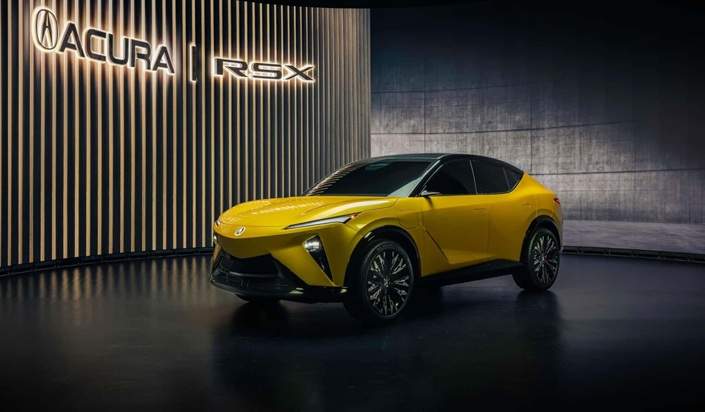Honda calls this its best shot. After years of criticism for running behind in the electric vehicle race, the company is betting big on the Acura RSX — a luxe, home-grown EV that the automaker says will showcase its new software-first approach and hardware designed for performance. The question on everyone’s mind: is this the moment Honda finally gets electric right, or just another delayed promise?

New breed of Honda EV
Acura positions the RSX as the first vehicle to ride on Honda’s fresh, software-defined EV architecture — the same backbone that will underpin a broader family of future models. That’s a big deal. The RSX is designed to come with a new driver-assistance suite, a digital assistant, personalization features, seamless over-the-air updates, and a raft of AI-powered capabilities. In short: Honda wants customers to feel the difference not just under the hood but inside the software.
And Honda appears serious about performance. The RSX will come standard with dual-motor all-wheel drive, Brembo front brakes and a double-wishbone front suspension — hardware choices that signal a performance focus. Those components are the kind you expect on a true driver-oriented car, not a pared-down EV.
Here’s where skepticism kicks in. Despite the performance cues, key technical numbers are missing. There’s no official word on vehicle weight, power output, acceleration times, battery size, range, charge speeds or other critical specs. Without those figures, it’s impossible to judge whether the RSX will actually deliver a sporty, long-range, practical EV experience — or simply look sporty on paper.
Some of the headline features are promising on their own. The platform will reportedly support vehicle-to-load power exporting (think powering tools, tailgate parties or emergency gear from your car). Acura also plans to give the RSX North American Charging System (NACS) plugs from the factory, meaning native compatibility with one of the most widespread fast-charging networks. That’s the kind of convenience buyers want — assuming charging speed and range back it up.
Honda says the RSX will be assembled in Ohio on production lines that also handle gasoline-powered cars. That decision provides flexibility: if demand swings between EVs and conventional vehicles, Honda can adjust without costly retooling or idled plants. It’s a pragmatic approach that reflects lessons learned from earlier EV launches.
But caution has a cost. Industry watchers point out that patience can sometimes mean sitting out crucial innovation phases while rivals iterate and refine aggressively. The bigger risk: Honda may dodge earlier missteps only to arrive later when competitors have already solved many of the practical kinks around range, charging and software features.
A hard financial reality check
There’s one statistic that underlines just how steep the road ahead is for Honda’s EV ambitions. Data show Acura spent an average of $21,000 per ZDX sale on incentives — a sobering reminder that even EVs with upscale badges can struggle to generate demand without aggressive pricing or incentives. The ZDX, Acura’s only all-electric nameplate so far, was built by a partner; the RSX is different. It will use a wholly Honda platform, which could help margins — but only if the car sells at scale without massive discounts.
Acura’s new software strategy is the riskiest and most important bet. A software-defined EV platform can enable over-the-air improvements, personalization and a deeper vehicle-as-a-service business model. If Honda executes well, future RSX owners could see features improve over time — something early EV adopters have wanted for years.

That vision demands strong data pipelines, rigorous testing, and transparent safety and performance benchmarks. It also requires solid hardware: software can’t compensate for poor range, a slow charger, or a vehicle that feels heavy and sluggish. The interplay between software and hardware will determine whether the RSX is compelling on launch day and whether it stays competitive down the road.
Everything Honda says about the RSX sounds smart on paper: a new platform, modern software, performance hardware, domestic production flexibility and charger compatibility. But promise and reality are two different things. The true test will come when customers and independent testers can measure range, charging behavior, performance and daily usability — and when the market shows whether Acura can sell the RSX without excessive incentives.
For Honda fans and EV skeptics alike, the RSX is worth watching. If the company delivers a polished, capable EV that blends performance with practical range and fast charging — and pairs that with software that actually improves the ownership experience — Honda may finally write a compelling new chapter in its electric story. If not, the RSX could be another lesson in how hard mass-market EVs are to get right. Either way, this is Honda’s most important EV moment so far. The automaker can’t afford to get it wrong — because the industry and car buyers won’t be very forgiving.
Related Post
